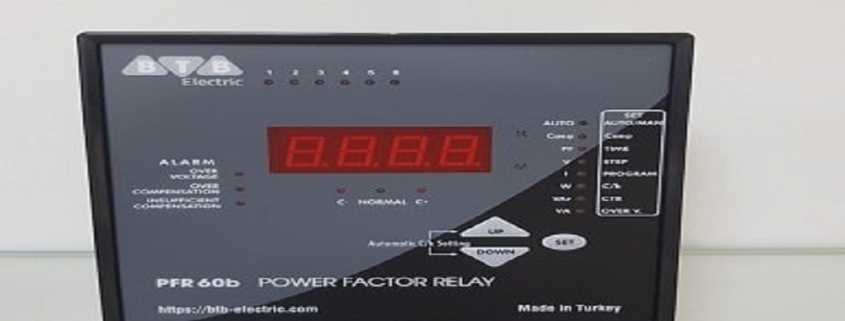Automatic Power Factor Controller – An Integral Device for High Performance, and Effective Power Consumption
The Automatic Power Factor Controller market is expected to grow at a compound annual growth rate of 5.32% to reach a market size worth US$4.559 billion by 2029. This market was valued at US$3.166 billion in 2022.
The reactive loads on a network continue to rise in today’s complicated energy landscape. Reactive power has significantly increased due to an increase in the power of transformers, transmission lines, and generators. Controlling reactive loads has grown essential, and the power factor controller has played a key role in reactive power correction systems. The power factor controller switches capacitors in order to achieve a user-defined target cos ?. The integration of a power factor controller enables feasible streamlining of operations, speeds up troubleshooting, and lowers the costs of supervised systems by using a power factor controller. The automatic power factor controller optimizes and increases the output power whenever the power factor decreases below a standard threshold value. Furthermore, it also enables easy monitoring of the parameters, reduces electric consumption, and enhances the equipment’s lifespan. The attributes mentioned above are bound to increase the demand for automatic power controllers. The global market of Automatic Power Factor controllers is segmented by type, component, end-user industry, and geography.
Analysts anticipate that the market will grow due to the increased demand for automatic power factor controllers across different industry verticals during the forecast period.
The growth of the market could be attributed to the rising need for power conversation in industries and in-home utilities to save electricity. These devices offer high-power factor consistently even under fluctuating loads, eliminate power factor penalty, continuously monitor the load, and can automatically switch on or off the capacitors, ensuring uniform power factor. Furthermore, with advancing technologies and the penetration of industry 4.0, the new trend of automation is expected to boost the market size, owing to increased efficiency and productivity in operation. Furthermore, the enactment of several stringent regulations to reduce energy consumption and reduce emissions are expected to affect the market growth positively. Consequently, many industries, including manufacturing, commercial, utility, and defense, are actively investing in upgrading their operation facilities to manage power much more efficiently while complying with the norms and regulations. Furthermore, these devices not only contribute to power factor management but also safeguards the equipment from harm. The aforementioned appealing attributes and developments in the industry of the automatic power factor controller are slowly but surely driving the growth of the market onward.
The high cost of installation and maintenance of automatic power factor controllers could hinder the market growth at a global level.
The high cost of installing and maintaining automatic power factor controllers is a major limitation in the global market, impeding market development. The commercial and industrial automatic power factor controllers are expensive, enabling only financially-able to adopt these devices. Furthermore, if the controller breakdowns, repairing is not a feasible option, owing to high repairing costs. These automatic power factor controllers also need regular maintenance to maintain smooth operation coupled with the technical limitation, which takes a significant portion of the companies’ budget. Such factors are causing to slow down the market’s overall growth. Furthermore, the cost of designing and manufacturing automatic power factor panels is extremely high due to the inclusion of large-capacity capacitors and inductors for low-frequency filtering. Similarly, the automatic power factor controllers with capacitors can easily be damaged once voltages surpass the threshold value and have a very short service life of about ten years. Such factors are expected to serve as a constraint, hampering the market growth.
According to regional analysis, the automatic power factor controller market in North America and the Asia Pacific is expected to hold a significant share during the forecasted period.
By geography, the automotive power factor controller market is segmented into five regions: Asia Pacific, Europe, North America, South America, and the Middle East and Africa. The presence of major key players in North America and their strategic developments deployed them is expected to fuel the market growth in the region. The launch of a next-generation power factor controller by ABB is the best example of this. This new RVC device comes with a simple, unique, and intuitive design, offering an enhanced user experience for effective monitoring and controlling. This new RVC can be used to monitor and control the power factor in multiple industries, from commercial and residential buildings to various end-user industries, including chemical, beverage, plastics, automotive, cement, and many more. Another example of this is a new product line launch by WEG in August 2019. This new line of automatic power factors and controllers enables reduced supervised system costs, swifter troubleshooting processes, and enhanced manufacturing processes. Furthermore, the steadily flourishing Asia Pacific’s manufacturing industry, coupled with the easy availability of skilled labor in the region, is expected to propel market growth. The market in their region is expected to be driven by China, India, Japan, and South Korea. The growing infrastructure development and the necessity for power management devices are expected to add impetus to the growth of the automatic power factor controller market in the forecasted period.
Covid-19 Insights
The global pandemic had a negative impact on the automatic power factor controller market. The mandated lockdown and quarantine have led to the closure of many production facilities, either partially or wholly. The surge in infection rates and social distancing measures enforced by the government has resulted in a shortage of human resources temporarily, thereby negatively affecting the productivity of enterprises. The closure of borders by multiple nations has further affected the imports and exports of the products. Moreover, the recession in the global economy has caused multiple end-users of the automatic power controller market to temporarily put a hold on their projects and slow down their strategic development plans. Nevertheless, post-covid, the market is expected to revive with the increase in demand for the end-user markets and, subsequently, automotive power controllers.



